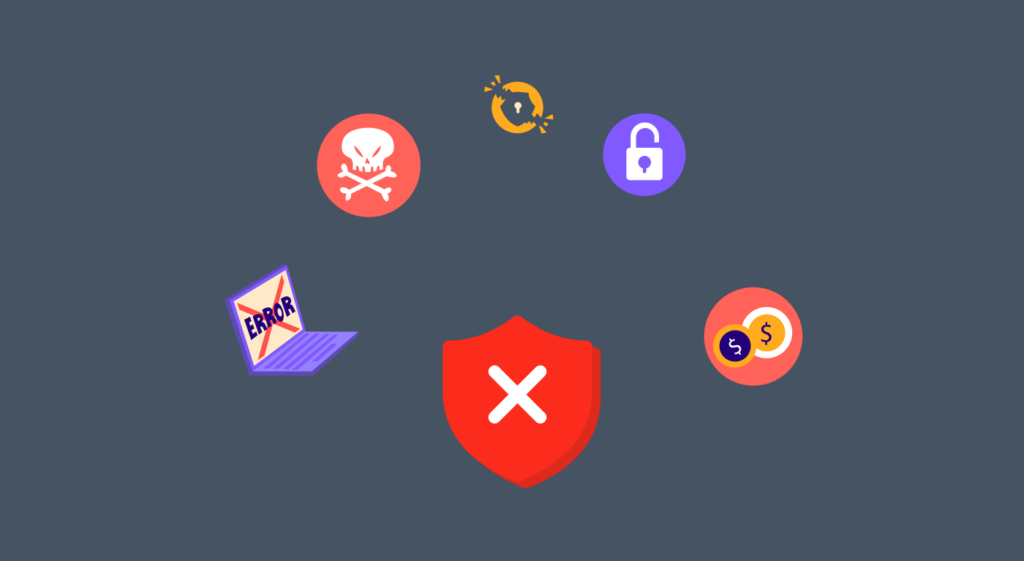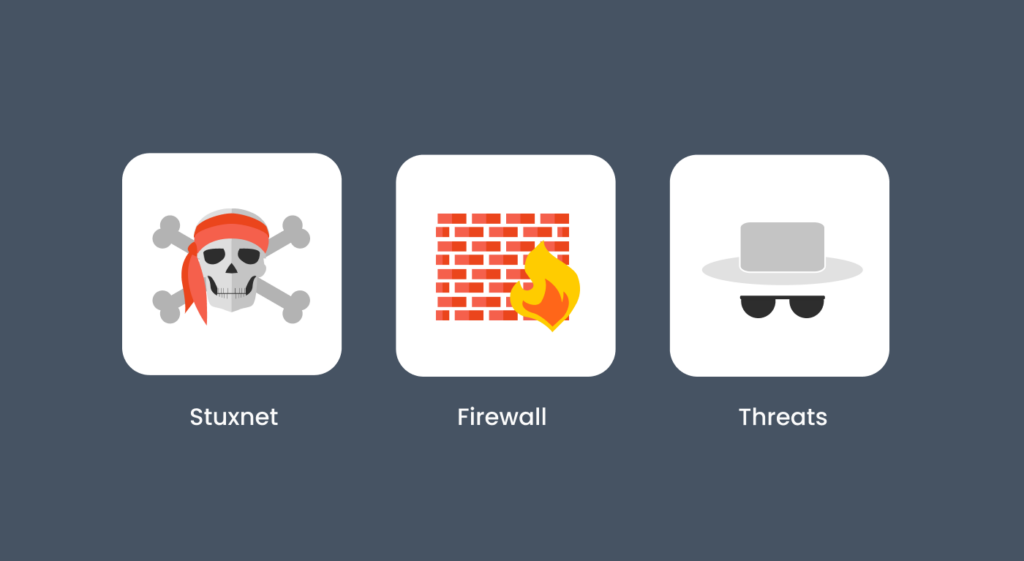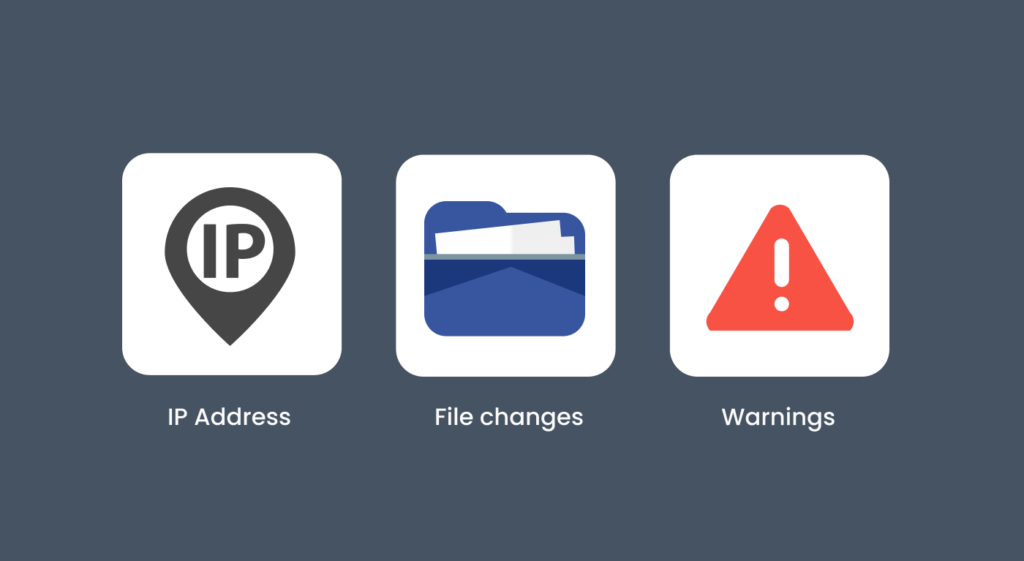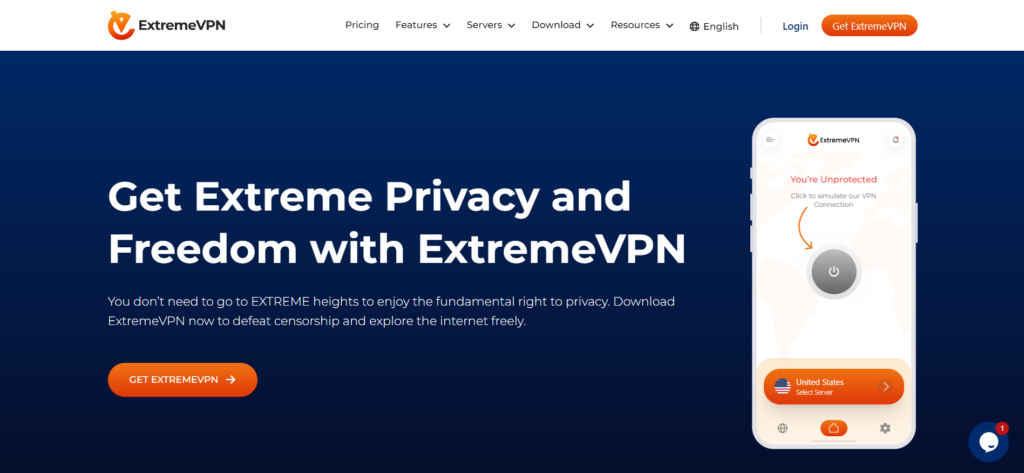
Imagine a recently developed app that allows you to save money, hitting over a million users. While everyone thinks it’s secure, including its developers, hackers have discovered a vulnerability with it. This scenario represents a Zero-hour exploit.
Not only will the hacker have unrestrained access to the app, but the fact that the bug can remain unknown for a long time makes it extremely dangerous. Keep reading this article as we shed light on what a Zero-day exploit is and how to identify and evade it in a proactive way.
What is Zero Day?

In the cybersecurity space, “Zero Day” refers to vulnerabilities, bugs, or weaknesses in a software or hardware that the developers have not yet discovered. The term explains that developers have zero days to fix the flaw before a malicious actor exploits it.
Since they are unknown to the software owner or creator, there is no pre-existing defense against them. Hence, they attract criminals who want to breach systems or steal data without hindrance.
What is a Zero-Day Vulnerability?
This is a security flaw in a software or application that is yet to be identified. The affected system is completely exposed because there are no existing patches or updates to protect it. Thus, the attackers can bypass existing security like firewalls and antivirus.
When discovered, an imaginary race starts to happen between the hackers who want to exploit it and the developers who want to create and deploy a patch before any damage is done.
What is a Zero-Day Exploit?
A zero-hour exploit describes the method or tool used by malicious actors to take advantage of a zero-day vulnerability. This can vary from simple scripts to advanced multi-stage cybercrimes.
They are sometimes referred to as stealth weapons because these techniques allow cybercriminals to breach a system without being detected by the app’s security software.
What is a Zero-Day Attack?
The attack happens when a hacker uses a zero-day exploit to compromise software. They can break in, steal data, modify the system, or even spread malware before a fix or security patch is available. This attack can lead to identity theft, major financial losses, reputational damage, and a threat to national security.
How Zero-Day Attacks Work

The process begins with a hacker or group of hackers working together to find a flaw in the software. Once they find it, they come up with an exploit — a code or technique to use the vulnerability.
The attackers often use zero-hour exploits directly by stealing sensitive information or installing malware that gives them continued access to the system. Alternatively, they can sell it to other cybercriminals on the dark web. Until the software’s security comes up with a patch, the attackers will do what they want without restrictions.
Who Carries Out Zero-Day Attacks?

These attacks are not random attempts at hacking. They are carefully planned and stealthily pulled off. As a result, they require serious skills and sophisticated resources. Let us take a look at some of the masterminds behind these attacks.
1. Cybercriminals
Motivated by the possibility of huge financial gain, cybercriminals use stealth weapons to steal personal data, financial records, and corporate secrets.
Because these weaknesses usually have no warning signs and are hard to detect, they are highly lucrative for cybercriminals. In fact, many cybercriminal organizations consider zero-day vulnerabilities prized assets that will earn handsome rewards in the black market.
2. Hacktivists
Many malicious identities use these attacks to promote their political or social agenda. For example, a hacktivist group can use zero day attacks to expose an organization opposing their cause. They can leak sensitive documents from a government or corporate body as a way of protesting against them.
3. Corporate Espionage Agents
Corporate espionage agents are often backed by corporate bodies to steal trade secrets, innovation, or other valuable data from their competitors. By doing this, they can gain a competitive advantage against a rival company.
These agents can buy zero-hour exploits from the black market to pay hackers to uncover the vulnerabilities in another organization’s system.
4. Cyberwarfare Hackers
Cyberwarfare hackers are sponsored by nation-states. They use these exploits as a tool to gain an edge during geopolitical conflicts. Thus, they attack government networks or major corporations in an enemy country.
The aim is to infiltrate or disable critical infrastructure that either weakens the target nation’s economy or the public’s confidence in the state.
Most Common Targets of Zero-Day Attacks

Any company, place, or sector that holds valuable information is an ideal target of such attacks. While some are targeted — focused on a specific organization, others are non-targeted — aimed at widespread infection of popular software.
Irrespective of the type of stealth weapon used, a common factor is the massive damage it causes. That said, here is a list of some common targets of zero-day vulnerabilities:
- Government and military agencies
- Financial institutions
- Educational institutions and research centers
- Healthcare systems
- Software and tech companies
- National security and political threats
- Critical infrastructure in sectors like energy, supply chain, and transportation
- High-profile personalities who possess sensitive information or can access vulnerable software
Popular Zero-Day Attack Examples

Several zero-day attacks stand out in history due to their scale and impact. Indeed, these incidents have revealed the far-reaching effects of these attacks and the importance of identifying and mitigating vulnerabilities as soon as possible. Below is a quick rundown of these events:
1. Stuxnet
Stuxnet was a computer worm discovered in 2010 that was specifically developed to attack Iran’s nuclear facilities. Stuxnet’s creators are believed to be a nation-state. They embedded it in a worm that was to disrupt the Siemens SCADA, Supervisory Control and Data Acquisition, systems that controlled Iran’s nuclear centrifuge.
The attack remained undetected as it spread through the country’s nuclear network. When it got into the software, Stuxnet caused the centrifuges to spin out of control, while the data feedback to the operators appeared normal.
By the time the damage was identified, it was too late. Apart from crippling Iran’s nuclear infrastructure, the worm contributed to a cybersecurity arms race among nations after seeing the potential of such a large-scale attack.
2. Sony Hack
People believe that the 2014 Sony hack was carried out by North Korean hackers in response to a movie titled “The Interview” that was produced and distributed by Sony.
The movie was a comedy show, and the story was quite provocative — two Americans made an assassination attempt on North Korea’s leader. Sony’s attack happened after the movie dates were released; it breached the company’s network and exposed large amounts of sensitive information, including email correspondence between executives, private employees’ data, and unreleased films.
The alleged attackers called themselves Guardians of Peace and demanded to withdraw the movie The Interview. They stated that failure to do so would lead to more dangerous outcomes. Not only did the exposed emails embarrass the company, but multiple lawsuits were filed over employee privacy violations. Eventually, Sony canceled the film’s release following the threats and security concerns.
3. Dridex
This banking trojan first emerged in 2012 and was targeted at financial institutions and businesses via a program that uses macros from Microsoft Word. Dridex infected people’s computers and stole login credentials to gain access to banking information. And it was often delivered via phishing emails with malicious links.
Once on a device, the trojan remains hidden and monitors the users’ interaction with their bank app or website. This exploit has been linked to the loss of millions of dollars for individuals and businesses, which has increased the attention of law enforcement agencies. Also, Dridex’s creators keep updating it to make it an adaptive and resilient cyber threat.
4. Firefox Zero-Day
In 2020, Mozilla Firefox users were targets of a zero-day vulnerability found in the browser. The attackers could install malware that may steal information and remotely take control of their devices. Thankfully, Mozilla learned about the exploit soon after and resolved it before it got out of hand.
5. Zoom Zero-Day Threats
In early 2020, a zero-day vulnerability was discovered in Zoom. Cybercriminals could spy on users, take control of people’s devices, and gain unauthorized access to meetings. Zoom responded by encrypting data and implementing stronger security protocols.
6. Log4Shell
This vulnerability was discovered around December 2021, targeting an open-source Java-based logging framework, Log4j. Cybercriminals were able to modify a string as code to Log4j installations in any device, causing remote code execution.
This vulnerability affected numerous systems, such as those of large corporations and government agencies, as Log4j was used by many organizations.
7. Shellshock
Shellshock targeted a vulnerability in the Unix Bash Shell. It affected the web servers, routers, and IoT devices in 2014. Here, the criminals found ways to exploit weak systems, which they’ve done particularly by sending requests.
This way, they were able to gain control over them. This event caused widespread panic, and it showed how important it is to review and update the foundational software of a system.
8. Petya and NotPetya
These are two high-profile ransomware attacks that happened back in 2016 and 2017, respectively. Both of these were destructive wiper malware that found and exploited vulnerabilities in the Windows operating system (they caused global system lockout and data harm). Among the two, NotPetya’s main aim was to create chaos rather than financial gain.
The attack caused wide-scale destruction — an estimated total damage of $10 billion to multinational corporations such as shipping, pharmaceutical, and logistics companies.
9. WannaCry
In May 2017, a ransomware attack happened on Microsoft Windows known as EternalBlue. It was reportedly developed by the NSA and leaked by a hacking group called Shadow Brokers.
WannaCry encrypted files on infected computers worldwide and asked to pay a Bitcoin ransom for the decryption of the files. The attack affected over 200,000 computers in over 150 countries, including the systems of hostels, transport organizations, and government agencies.
10. Barracuda Networks Exploit
As you can guess through the name, this attack happened on Barracuda Networks — a company that offers cybersecurity services. Here, the organization noticed a zero-day vulnerability in its Email Security Gateway (ESG) appliances in 2023.
Criminals hacked the company’s data (including their users’ information) and then started to make changes to them. Due to this attack, Barracuda’s network lost their reputation among their clients, businesses, and institutions.
11. Google Chrome Zero-Day Vulnerabilities
In 2021, a hacker group found and took advantage of some vulnerabilities within the Chrome web browser. These identities executed a code to have remote control over the browser. Then, they became able to steal the company’s data, monitor user activity, and install malicious software.
Google found it soon and minimized the attacks — it quickly patched up all the systems.
12. Kaseya
In 2021, a ransomware attack took advantage of zero-day vulnerabilities in Kaseya’s Virtual System Administrator (VSA) software. The hackers used the company’s system to introduce ransomware to about 1,500 companies worldwide.
Eventually, the attackers requested a $70 million ransom, which made the incident one of the largest ransomware demands in history.
What Makes Zero-Day Vulnerabilities So Dangerous?

Zero-day vulnerabilities are major security threats to users — they make it easy for cybercriminals to carry out their malicious activities. Below, we are going to explain what makes these attacks dangerous:
- They lack patches. Since these attacks are unknown to software developers, there is usually no immediate way to close the security loophole. As such, the affected system can remain unguarded for weeks or months.
- They are of high value to cybercriminals. Black-market prizes for zero-exploits are extraordinarily high. Exploit brokers and state-backed cybercriminals are willing to pay large sums for them, which makes the market thrive.
- They have a widespread impact. A single zero-day vulnerability in a software or operating system can affect millions of users worldwide. This ripple effect can disrupt an economy, important infrastructure, and some essential services.
- They are difficult to detect. The stealth nature of these attacks adds to their risk factor, as traditional security software cannot detect them. Most times, the attack only becomes visible after major damage has been done.
Signs that You are Experiencing a Zero-Day Attack

Identifying a zero-attack could be challenging since they can evade regular security tools. Nonetheless, there are still some ways through which you can see whether your system is under attack, even if you don’t know the exact vulnerability. Let’s talk about these signs below:
- Unexpected behavior: If you notice something strange happening with your system, it might reflect that you are possibly going through a zero-day attack. Some common signs include sudden shutdowns, slowdowns, or crashes.
- Unusual network activity: Look for the IP addresses communicating with your system. If you see any unknown users or connections, it can be a sign to be alert.
- Security alerts or warnings: Take security warnings from your Antivirus and intrusion detection systems seriously, as they may help you identify if an attack is going on.
- File changes: You kept a file somewhere on your system but can’t find it now — be cautious. Zero-day attacks can modify your system files, i.e., changing names, directories, sizes, etc. So, if you notice a file change or deletion without your permission, it can be another red flag.
- Strange account activities: Another common indicator is unexpected account logins from unknown locations or sudden changes to your account that you haven’t carried out.
- Data loss: An attack may be happening if you notice unexpected data loss on your system or if some data is corrupted that you can’t recover.
Tips to Stay Safe from Zero-Day Exploits and Attacks

These exploits are generally difficult to defend against. However, if you are vigilant and have a layered approach to your security, you can minimize the damage they can cause. Here are some tips you can adopt to stay safe from such threats.
- Regularly update your software: While Zero-day vulnerabilities are unpatched, the developers should typically release new patches once they identify them. It is good practice to enable automatic updates on your system’s software so that these fixes can be applied immediately when they are available.
- Stay informed on cybersecurity threats: If you keep educating yourself on current cybersecurity trends, you can prevent the attacks.
- Steer clear of phishing scams: Phishing scams are the most common way for hackers to introduce malware to systems. Thus, you should always confirm the authenticity of an email or a suspicious-looking link before clicking on it.
- Use antivirus software: While an antivirus may not detect a zero-day threat, it can protect you from malware and suspicious files. These days, many antivirus solutions come with machine-learning features to detect abnormal network behavior. This can help you catch a stealth weapon attempt before it infects your system.
- Use firewalls: Firewalls prevent unauthorized access to your network. Additionally, they can block malicious IP addresses and restrict an attacker’s access to your sensitive data. Make sure you configure the firewall correctly and review its rules to strengthen your protection against unwanted guests.
- Use monitoring tools: Monitoring your network traffic helps you easily notice unusual patterns. As a result, you can quickly identify and respond to pointers of an ongoing threat.
- User education on the dangers of phishing: It is important to educate users and employees on the dangers of phishing and other cyber threats. This is because they are usually the first line of defense. Consequently, their action or inaction can either reduce or encourage a zero-day attack.
- Use a VPN: A strong, rich-featured VPN like ExtremeVPN hides your network traffic and makes it difficult for hackers to exploit your sensitive information. By using a VPN, your internet is less vulnerable, which can minimize the possibility of your data being intercepted.
